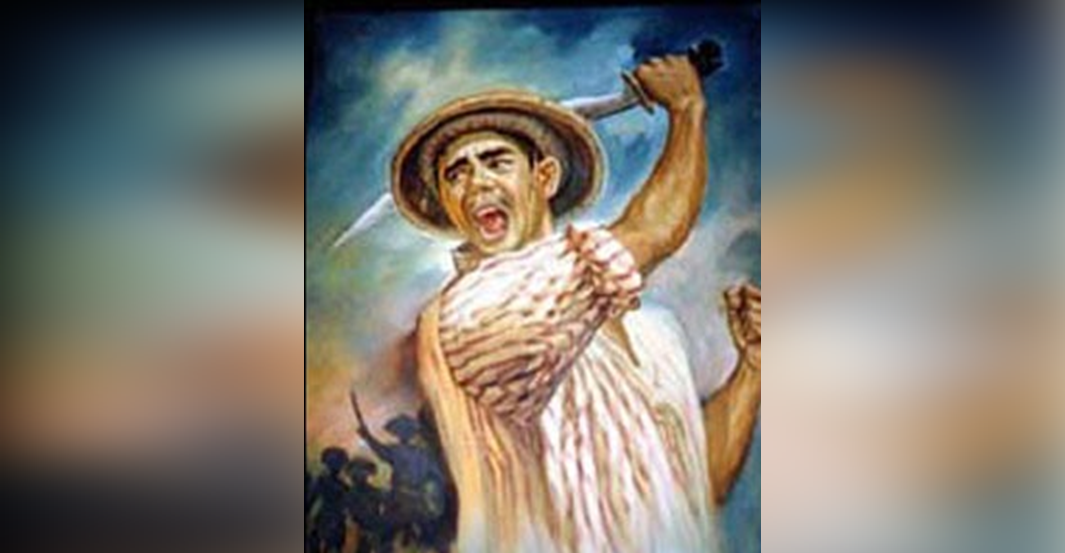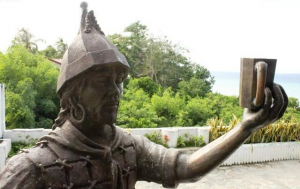Proem
The reference used by our historians regarding the Francisco Dagohoy Revolution is practically only the compilation of books known as “The Philippine Islands” by Blair and Robertson.
Dr. Gregorio Zaide added some portions of the Diary of Fr. Narciso Hernandez de Jesus Maria. Even then we can already determine the year as 1744, name of the Spanish Friar, and some other data.
Additional Sources
Herewith are additional sources now available regarding the Dagohoy Revolution, but still we do not have yet a definite statement of the start of the revolution. However, we can now accurately determine the date from analysing the facts. Here are the additional sources:
- “Conquista Espiritual De Bohol”, a Doctoral Dissertation of Teresita Roble Rosales presented to the Universidad de Madrid, Madrid 1971. Its Chapter X has the subtitle “Sublevacion de Dagohoy en 1744 (Revolt of Dagohoy in 1744). It is based in original Spanish records.
- “The Life and Struggle of Francisco Dagohoy: a historical and cultural heritage to the Filipino people”. An M.A. Thesis presented to the Graduate School of the University of Bohol, Tagbilaran City, 1970. It is mainly based on field and site investigations and interviews and focus group discussions and affidavits of resource persons such as a grandson, nephews, and other close relatives of Francisco Dagohoy.
- The diaries of Fathers Narciso Hernandez de Jesus Maria and Julian Bermejo. Fr. Narciso Hernandez was the chaplain who accompanied the Spanish forces that attacked from Guindulman, Bohol while Fr. Julian Bernejo was the chaplain of the Spanish forces that started from Boljoon, Cebu and landed in Calape, Bohol to attack the Boholano forces situated in Agbonan (now: San Isidro, Bohol) and Agad (now: Antequera, Bohol).
- Cosas Notables de Talibon (Notable event in Talibon, Bohol). The Cosas Natables are annual reports of the Parish Priests of the towns and gathered at the Augustinian Recollect Headquarters in Spain and Cavite. A “Supervising Priest” will come to Bohol to collect the report or do the report himself.
- HISTORIA GENERAL DE PHILIPINAS TOMO XIV, By Fr. Juan de la Concepcion, 1792. Its chapter 3, pp. 76 to 107, is about the Dagohoy Revolution from 1744 to about 1785.
The Analysis
If you will read and analyse the authentic original records or data, you will able to come up to the date July 4, 1744.
According to the Cosas Natables de Talibon, Fr. Gaspar Benito Morales was assigned to Inabanga four (4) times, first was on June 7, 1741 to April 2, 1742; second was on April 10, 1942 to November 29, 1743; third on June 8, 1744 to October 26, 1744; and fourth on January 23, 1745 to April 25, 1746.
It is said that on a day of obligation, the curate priest, Fray Gaspar Benito Morales required all residents of Inabanga, Bohol to attend the Holy Mass. The day of obligation was the fiesta of St. Paul, the Patron Saint of Inabanga. The feast days of St. Paul and St. Peter is June 29. (Note: Now, Inabanga celebrates June 30, in order not to conflict with Loboc, Bohol whose Fiesta is June 29 for St. Peter.)
The third assignment of Fr. Morales in Inabanga was one June 8, 1744 to October 26, 1744. Therefore the St. Paul fiesta that we refer to was the fiesta on June 29, 1744.
Fr. Morales noticed that one person was missing or did not attend the required Holy Mass. According to Teresita Roble, the name of the person was “Ibong”. Fr. Morales labelled Ibong as an apostate and ordered his arrest.
The next day, June 30, 1744 the constable, who happened to be the elder brother of Francisco went to the mountains to arrest the apostate Ibong.
According to Sotero Misa, in his Masteral Thesis, the name of the constable and brother of Dagohoy, was Sagarino. According also to Mr. Misa the real family name of Francisco was “Sendrijas”. The word
“Dagohoy” was sonly a non-de-guerre or war name. These names are accepted by Mr. Emmanuel Romanillos based on his field research for his Professorial Lecture about Dagohoy presented to the University of the Philippines, Diliman Quezon City.
By mid-morning of June 30, constable Sagarino was able to accost Ibong, but Ibong refused to be arrested. A duel ensued and it was constable Sagarino that was killed and Ibong fled.
A runner was sent to Inabanga to inform Francisco as to the fate of this brother. It was already in the afternoon of June 30 when Francisco was able to meet the group who was carrying the dead body of Sagarino towards Inabanga. The group reached Inabanga in the evening. However, Fr. Morales refused to be disturbed for the night.
The next day, July 1, Francisco brought the body of constable Sagarino to the church for blessing and proper burial. According to Fr. Juan de la Concepcion in his book “Historia General de Philipinas”, Fr. Morales demanded a burial fee of two (2) pesos because Sagarino died in a duel. Accoding to Fr. Morales, church rules prohibits proper burial for those who died in a duel except if they pay the burial fee.
Francisco “Dagohoy” Sendrijas refused to pay the demanded burial fee. According to Francisco, constable Sagarino died due to his service to the Church and the priest.
Both sides were adamant. Francisco left the dead body of Sagarino in the church and after three (3) days it was not yet buried.
On the fourth (4th) day Francisco Dagohoy declared his defiance against the priest and the Spanish administration upon learning that the body of Sagarino was still not buried even if it was already putrid and odorous and eaten by worms.
The 3 days when Sagarino was not buried in front of the church will be July 1, 2, and 3. So the 4th day when Francisco Dagahoy declared his defiance will be July 4, 1744.
Who was Francisco Dagohoy?
Fr. Concepcion in his book “Historia General de Philipinas (1792)” said that Dagohoy was a “Caveza de una porcion de naturales (Head of a portion of the natives). In other words, Dagohoy was a “Cabeza de Barangay” in Inabanga.
When Francisco “Dagohoy” Sendrijas “convoked” the people, some 3,000 joined him in rebellion. First they raided the San Xavier Estate of the Jesuits and took cows, horses, carabaos, etc. and burned those unusable to them.
According to Mr. Sotero Misa the San Savier Estate of the Jesuits was located in today’s barrio Kawayan, Inabanga, Bohol.
According to the record of Fr. Concepcion, when the Augustinian Recollects took over the management of Bohol, Fr. Santa Barbara, the head of the Recollects recorded that Dagohoy was the “Candillo Superior (Overall leader)” of the Boholanos.
The American declaration of Independence was on July 4, 1776. The Boholanos declared its independence on July 4, 1744 or exactly 32 years ahead.
We really have a reason to celebrate Francisco Dagohoy Day on July 4.



Be First to Comment